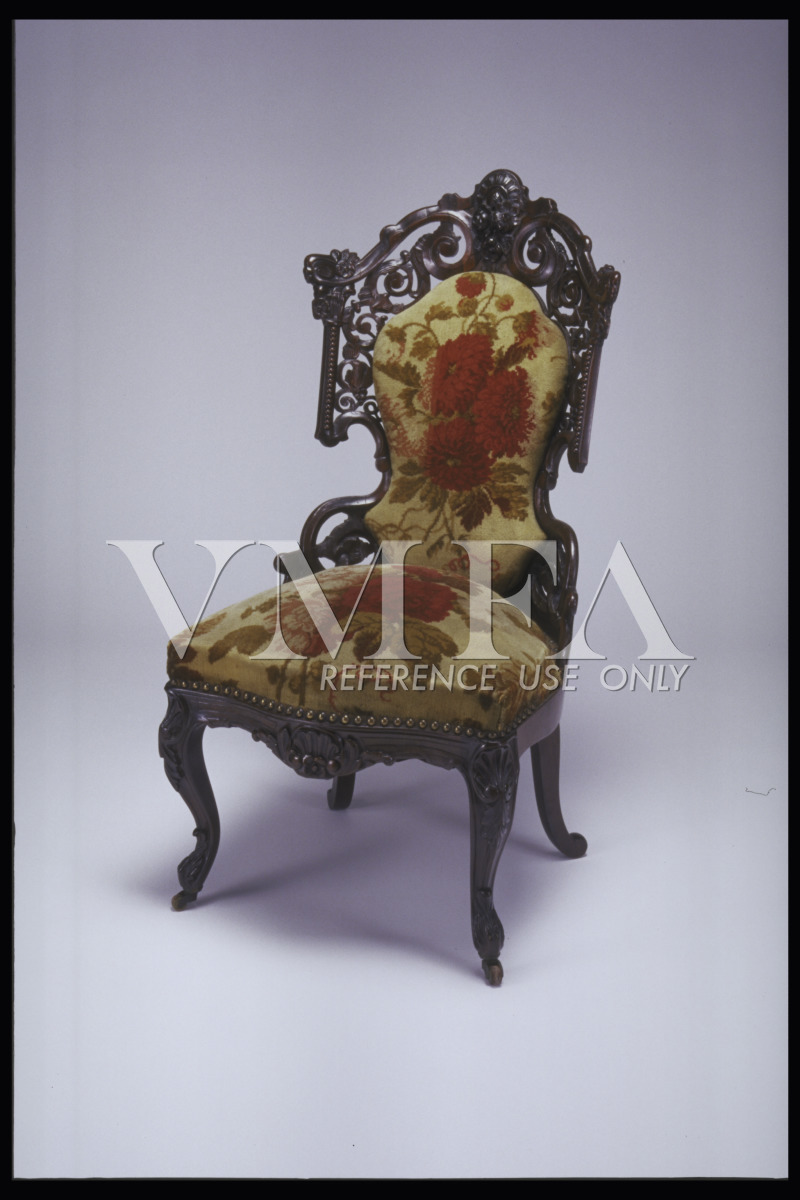
Side Chair (Primary Title)
Charles A. Baudouine, American, 1808 - 1895 (Artist)
Mid-19th-century America’s demand for affordable furniture with exuberant carved ornament and historicist detailed depended on advanced manufacturing techniques. Steam-driven saws and veneer knives roughed out basic forms that could then be finished by hand. This allowed the inclusion of elaborate 17th- and 18th-century details – the scrolled back with intricate strap work, the carved seat apron and the sculptural cabriole legs, as seen here – at a fraction of their previous cost.
Retaining its original Brussels carpet upholstery – and its original label – the design of this chair may have been inspired by influential French serials of the period, such as Le Garde-meuble. From about 1830 until the mid-1850s, Baudouine vied for the patronage of America’s fashionable elite, employing seventy cabinetmakers in his shops on Pearl Street and, later, Broadway to produce objects suited to their Parisian tastes. Baudouine also retailed imported French furniture, textiles, hardware, and trim, to which he likely applied his own label.
Some object records are not complete and do not reflect VMFA's full and current knowledge. VMFA makes routine updates as records are reviewed and enhanced.

